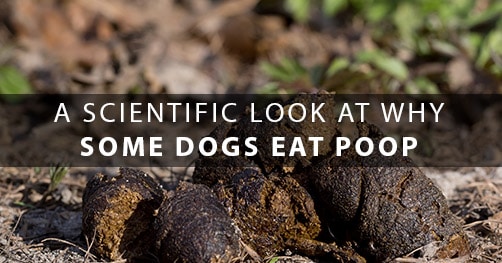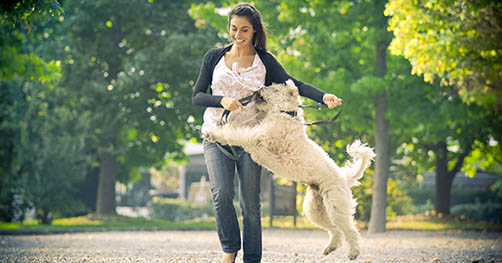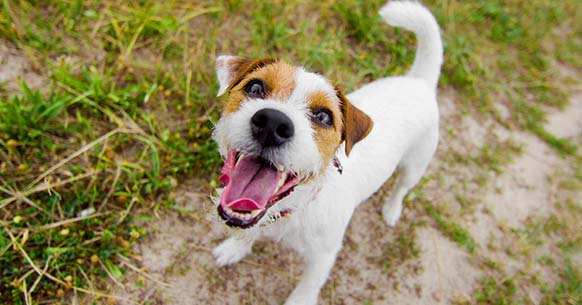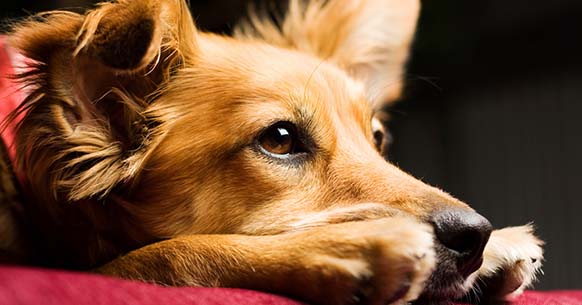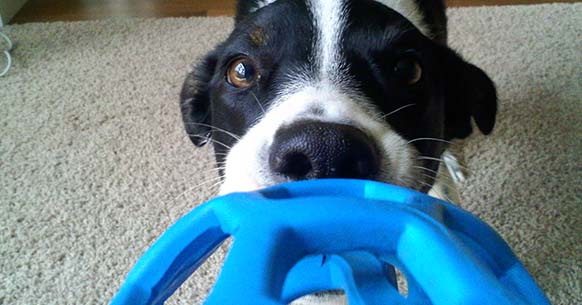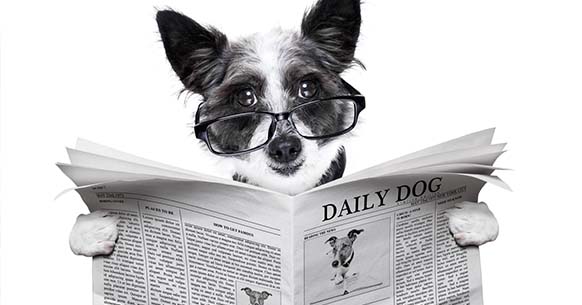Why Do Dogs Eat Poop? A Look at Coprophagia
I love my dog. She cracks me up. She will do the funniest things. She digs when I am gardening; I think she wants to help! She even has brought me a dead animal as a present. But when I saw her eating poop, I was disgusted! Why, why, why? I didn’t understand. Why would my “best friend” do something so repulsive? We would like to think of our pets as humans, but dogs will be dogs and will continue to exhibit dog behavior, no matter how domesticated they are. Why would any animal eat feces? Dogs are misunderstood on so many levels. In fact, in the town where I live, working ranch dogs have been shot for eating poop. This poop-eating behavior is actually very common in the animal kingdom. There are many reasons why dogs or other animals eat a piece or two of poo. Let’s take a look at why.
The act of eating poop is so common that there is an actual word for it: coprophagia. For example, the dung beetle’s primary nutritional source is feces. Elephants, giant pandas, guinea pigs, and hippos are a few other species that consume this treat from time to time. Surprisingly, poop can offer a good source of nutrients. Rabbit poop is rich in enzymatic nutrients and vitamin B. An animal lacking certain digestive enzymes can have an urgent need to engage in coprophagia, especially if it has pancreatic insufficiencies. Malnutrition from a poor diet leaves a dog hungry and searching for proper nutrients. Surgeries involving the gut with the removal of intestines can lead to a lack of nutrients being absorbed, which can cause malabsorption and coprophagia.
Poop-eating behavior also has evolved as a protective mechanism, ensuring the pack’s survival. A designated pack member will hide the scent of a weak or sick animal by eating its excrement, eliminating any smells of weakness. Predators seek out easy prey such as the young. A lactating mother and her newborn pups are prime targets. Milk by-products in the puppies’ feces are a powerful and attractive smell to predators. Dogs eat poop as a means of keeping their newborns safe and clean.
A bitch instinctively will clean her pups during the birthing process. She eats the remnants of birth and will lick the newborn’s anus to stimulate the bowel process. This keeps the den free from disease. This process will go on for four to five weeks after birth. In some cases, a brood bitch (a female dog kept for breeding purposes) will continue this process throughout her life, regardless of how old the puppies are. Some females will ritualize this habit whether there are puppies or not.
Some dogs love to eat the little delicacy known as kitty roca. Cat poop in the litter box is extremely dangerous to dogs. Manufacturers say it is nontoxic for cats, but they don’t put a warning label on the box about consumption by dogs. Herein lies the problem: the cat litter molecules (or clay) are absorbent, soaking up water. When the kitty roca is swallowed, the dog’s intestines, mostly liquid, will combine with the cat litter to form a cement-like substance. The hard blob subsequently will stop any normal passage of feces, blocking the flow of digestion. This bad case of constipation wreaks havoc on a dog. Your dog can suffer many gastrointestinal symptoms such as gastric pain, belly bloating, nausea, vomiting, and more. If your dog eats enough kitty roca, its intestines can rupture due to the swelling.
Keep in mind that your dog can become ill from eating poop because it can carry parasites such as giardia and Coccidia. If it sits around for a few weeks, roundworm and whipworm have been known to populate poop. Herbivore feces from deer, goats, rabbits, and so on cannot transmit parasites to carnivores such as dogs, bears, and wolves. Interestingly, parasites are specific to the host they are carried in. Therefore, carnivores can be infected only by eating other carnivores’ poop! It’s a vicious cycle: the dog eats poop infected with parasites; the parasites gobble up the nutrients for fuel, leaving the dog hungry; and then the dog looks for more food, only to eat poop again. Getting your dog tested yearly for parasites can be a lifesaver.
Dogs eating poop may have developed as part of their evolution or for nutritional purposes; in addition, there are behavioral reasons. Allelomimetic behavior is the act of doing the same as others—basically copying a behavior. Some dogs might copy this eating habit, thinking it’s a good thing to do. Submissive dogs will eat the poop of a more dominant dog. This occurs when there are multiple dogs living in the same house. A stressed, nervous, or anxious dog will be driven to unwanted, odd behaviors. You’ll see this behavior in dogs that are confined to a kennel or chained up. They might indulge in excrement if they are bored, lonely, or neglected. If your dog is young, it might be exploring its world. Some dogs like the taste, which is very comparable to their warm, moist food as pups.
Dogs love things that taste and smell terrible to us. You might say some dogs have a sort of “refined taste.” We may not understand why dogs want to eat poo, but they do.

Just a side note: if you have a dog that eats its own poop, you can try feeding it pineapple. Half a chunk or one teaspoon will suffice. Pineapple contains the digestive enzyme bromelain. This chemical acts as a meat tenderizer. Some dogs have been known to be put off by the taste of pineapple in their own poop. It tastes good when it goes in but bad after it comes out!
References:
http://healthypets.mercola.com/sites/healthypets/archive/2013/08/23/coprophagia-poop-eating.aspx
https://en.wikipedia.org/wiki/Coprophagia
http://www.peteducation.com/article.cfm?c=2+2085&aid=155
How To Stop A Dog From Jumping Up
Jumping is a problem that a lot of pet parents deal with. Dogs jump for a couple of reasons. One reason is because the dog is excited. Another reason is because the behavior has a reinforcement history. And one other reason is because our faces omit a lot of smells and the dog wants to get a good whiff.
Stopping Your Dog From Jumping on You:
A lot of people get home after a long day of work and get jumped on when they walk through the door. If this is a problem to you, how I recommend remedying this situation is to ask the dog to sit instead of jumping. This is what is referred to as an incompatible behavior. Now, first things first, if you only try this when you walk in the door, and don’t do any practice runs of it, it’ll probably take a while to work. If you go out of your house a couple times a day, and then return and ask your dog to sit, it’ll help him understand what you want when you do it the “real” time. Use food rewards to encourage him to sit in the future. It’ll also be a good idea to have some treats at the ready when you do actually come in on the “real” ones. Stay patient with this, it will take lots of repetition. In the long run, you will not need treats for this, as your attention in this situation is what the dog is after and will serve as the reward.
Another game I like to play that helps dogs understand that we want them to sit instead of jump consists of teaching and “auto-sit.” To teach this, I grab a treat and show it to the dog. I then walk to a spot in the room and turn towards the dog. The dog comes up to me and usually tries behaviors that have worked in the past. (Jumping, pawing, barking, etc.) I patiently wait for the dog to offer a sit. Once he sits, I give him a piece of the treat and then I move to another spot and start over. As the dog starts doing well with this, I start moving a little faster to cause a little more excitement. The idea with this is to get the dog in the habit of walking up and sitting in front of people, instead of jumping on them.
Lastly, one other game that can be played is called “4 on the Floor.”
This consists of tethering the dog to something sturdy. (Maybe the bottom of the couch) The dog being tethered gives you the ability to walk away without him following. Walking away when done correctly is a form of punishment. As soon as the dog takes one paw off the ground, you want to walk away. (You can use this for play biting too.) When you’re hanging out with him you’ll want to give him lots of attention and even food or toy rewards for not jumping. As soon as he jumps, walk away. This is something you’ll want to do for a couple weeks. (Even when the jumping has stopped with you when doing the game.) By continuing you’ll be continue to reinforce the good behaviors.
If your dog is jumping on you while you have one of his toys or are holding on to something here’s a video to help with that:
[youtube id=”b6cuArL4JHA”]Stopping Your Dog From Jumping on Others:
A leash is an extremely important tool to use when trying to get your dog to stop jumping on others. The leash is a tool that allows you to remove him from his reward. (The person) when he does in the incorrect behavior. (Jumping) Here’s how I use it:
The first thing I do is teach the dog to walk up and sit in front of a person. I refer to this as “Go Say Hi.” (Reference video for visual) I practice this cue with people in the house, and with anybody that is willing. As you can see in the video, the dog is cued to “go say hi” and is brought up on leash to the guest. The goal is for the dog to go up and sit so it can greet the guest. If he does, he can get what he wants which is the attention. If he jumps, use the leash to bring him back to the starting point for a couple seconds. Repeat this process until the dog successfully sitting instead of jumping. If the dog is struggling, give him longer breaks in between attempts. (A couple minutes.) During those breaks you can either hold onto him by his leash, or put him away. (Crate, baby gate etc.)
Here is the video:
[youtube id=”tVWYCrWuLGs”]Be very strict with this process. It isn’t the easiest thing to accomplish, but with lots of consistency you’ll have a dog that doesn’t jump on guests coming in the door. Also, don’t allow people to say that jumping on them is okay. This is going to confuse your dog and cause the jumping to continue. If the situation comes up, tell the person your dog needs to sit for greetings. If they can’t respect that, they lose their opportunity to pet your dog.
In conclusion, to stop unwanted jumping you need to be very consistent. Don’t allow your dog to jump on guests sometimes. Don’t allow guests to say, “it’s okay, he can jump on me.” Don’t allow the dog to jump on you sometimes. Always ask the dog to do a more appropriate behavior like sitting. If you stay strict, you’ll accomplish your goal. If you get lax, you’ll probably have a dog that jumps for a lot longer than you’d like.
How To Stop Your Dog From Barking
Dogs bark. Yes, this is a pretty obvious statement to start off with, but I feel it’s important to point out. This is something that dogs do. I am going to be talking about different ways to curb some of the barking, but always remember that this is a trait of the domesticated dog.
Why Do Dogs Bark?
There are a couple reasons why dogs bark. In a lot of cases a dog is barking because it either wants something to get closer, or something to get further away.
Here are some other reasons:
- Attention seeking. (Give me attention! Give me a treat!)
- Startle response. (Random noises)
- Boredom (Lack of exercise)
- Excitement (Someone coming in the door)
- Frustration (Not understanding what you’re asking)
- Anxiety (Separation anxiety)
- Fear
As I’ve listed, there are many reasons why dogs bark. The first thing you need to do to help curb the unwanted barking is to identify what the reasoning is for why it’s happening. Depending on the reasoning, there will be different approaches on how to handle it.
In most cases Positive Reinforcement takes place when the dog barks, which results in more barking. Positive Reinforcement (R+) is when the dog does a behavior, and the behavior gets the dog something it wants. When R+ takes place, the behavior is very likely to repeat. Also, when R+ takes place over and over for that behavior, the behavior often gets stronger and stronger.
How to Stop Your Dog From Barking (Or from Unwanted Barking)
One of the most important things to do to help curb that unwanted barking is to make sure the dog gets zero enjoyment for the behavior. As I mentioned above, if your dog does the barking and gets what he wants, he will do it again. If he does the barking, and it results in nothing good, the behavior should start to go away on its own. If your dog is barking at you for a treat, and you do not give him a treat, the barking will stop. (It may take some time if the behavior has had a reinforcement history in the past.) If your dog is barking to get someone to go away, and the person doesn’t leave, the dog will learn that barking doesn’t work, and in theory, the barking will stop. If the barking is to get the person to come to them, and the person waits for the barking to stop until coming to the dog, the dog will learn that barking doesn’t make the person come, and actually being quiet will make the person come. These are just a couple examples. The overall idea though is to teach the dog that barking isn’t the answer.
Here are some other ways to get barking to stop:
- Put the bark on cue.
- Develop a “quiet” cue.
- Reinforce incompatible behaviors.
- Increase exercise (physical and mental)
- Prevention / Management (blocking windows)
Put the Bark on Cue
While this may sound a little silly at first, if you put the bark on cue, and are very strict with it, the theory behind it is the dog won’t do it unless it’s cued. To teach this you need to find a way to get your dog to bark. For some dogs knocking on the door will trigger a bark. What you’d want to do is knock, the dog would bark, mark the behavior verbally or with a clicker and then reward. Do multiple reps of that. Once your dog is responding pretty well to that, you can start using a verbal cue prior to knocking, mark and reward. You’d then want to fade out the knocking and your dog would do the behavior as you cue it. (This probably isn’t going to work for most people, but it is an option.)
Develop a “Quiet” Cue
This is one that I use quite often. The way I teach this may seem a little counterproductive to start, but it works well in the long run. Here’s how I do it: When the dog is barking, I walk up and say, “quiet” and then present a treat. The dog typically quiets down long enough to just take the treat and then go right back to barking. Do lots of reps of this. I want the dog to start to associate the word “quiet” with getting a treat. After you do enough reps, when your dog is barking, you’ll be able to say, “quiet” and your dog will stop barking and look at you in anticipation of getting that treat. This is the behavior we are looking for. Once your dog responds to the quiet cue, you then want to start asking your dog to be quiet for longer periods before giving the treat. The overall goal is to be able to say, “quiet” and have your dog stop barking. You’ll need to do lots of repetition with lots of reinforcement to make this work.
Reinforce Incompatible Behaviors
An incompatible behavior is a basically getting your dog to do something that he can’t physically do while barking. An example is that the dog can’t quietly look at the thing it was barking at, and bark at the thing at the same time. These are incompatible behaviors. One thing I like to do is teach the dog to look at the thing without barking. Here is a video I made explaining this:
https://www.youtube.com/watch?v=Q87OUsZvqKc
Increase Physical and Mental Stimulation
A lot of barking happens because the dog is bored. The dog is bored because he has extra energy and doesn’t have a way to exert it. It is said that 10 minutes of mental stimulation is equivalent to about 30 minutes of physical exercise. I’m a big fan of mental stimulation because it tires the dog out and also doesn’t build the dog’s stamina. Here are some forms of mental stimulation you can do with your dog:
- Teach him to use his nose!
- Make him work for his food or treats!
- Teach him some tricks!
- You can also work on regular manners / obedience training.
Prevent and Manage
This basically means that you’re preventing your dog from doing the unwanted behavior while you’re not present.
- If barking out of the window is the problem, you’d want to either utilize a crate, or block the windows while you aren’t there.
- If your dog is barking while it is outside, either be out there with him, or don’t let him outside by himself.
- If your dog is barking because he’s frustrated, lower the criteria.
The things I’ve mentioned above are some ways to help you achieve your goal of less barking. If you are dealing with fear or anxiety that takes a bit more work than what I mentioned above. Give some of the ideas a try to get your dog’s barking to decrease. Be very consistent and give lots of reinforcement.
Can dogs and cats get along?
Let’s face it: getting along with one another is tough. We’ve all seen it: cats fighting dogs, cats fighting humans, cats fighting other cats. All of this disrupts the peace of the household. The Perfect Paws Web site describes dogs as social creatures and cats as independent, solitary creatures.¹
However, cats do tend to live in groups. In observing my own animal family (two cats and two dogs), I have seen that this is true! The obstacle to the animals’ getting along lies in the two animals’ dispositions. Understanding each animal’s needs and instincts—and working within them—will allow for a more respectful relationship between cats and dogs.
Introducing a cat and a dog to each other takes gentleness and patience on the part of the owner. Most dogs and cats will take a few days to become acquainted with one another’s scents. The owner can facilitate this process by placing the cat in the dog’s area, making sure the dog is elsewhere. The cat can then sniff around the room, undisturbed, to familiarize itself with a prospective roommate. For the same purpose, place the dog in the cat’s area while the cat is away. After several opportunities to become accustomed to each other’s scent, invite the two animals into the same area.
The first encounter is an important one; setting up the right conditions will result in a more peaceable future for the animals. It’s a good idea to exercise your dog to get him tired prior to this first meeting and to trim your cat’s nails. Praise your dog; give him treats for being a good dog. Redirect him at the slightest sign of his intent to lunge at the cat. Correct his behavior with a positive approach or vocal tone so that the association is a pleasant one. Show your cat an escape route or safe place to hide, preferably up high, out of the dog’s reach. Praise your cat’s good behavior too. It only takes a second for a bad experience to occur, so watch for signs of stress, and separate the animals before an incident starts.
Supervision is needed when placing your cat and dog in the same room together for the first time. Let them see and smell each other for a few minutes, and then separate them from each other. Your cat might hiss and bat at your dog to set distance boundaries. Watch your two pets interact as you increase their time spent together.
Allow this to happen naturally, but watch for excessive signs of stress in both animals. A little stress is good. Hair will stand up, and cats will arch their back, turning sideways (both animals instinctively make themselves bigger). The animals’ eyes will dilate with excitement, and they will stare intently. The tail is a good indicator of whether the meeting is going well (tail up means assertive, tail between legs means afraid, tail in neutral position means relaxed). Dogs tend to become aggressive and exhibit predatory behavior when they are highly excited or stressed. Cats tend to mark their territory with urine, excessively groom themselves, hide, or display aggressive behavior.²
Your dog and cat need to make friends with each other on their own with as little intervention as possible from you. In this fashion, they will learn to respect each other. Watch them play. The dog will jump around and perform a play bow (elbows on the ground and back legs up). Cats will pounce and box. This play should be done in a gentle manner and equally by both players. If for any reason it doesn’t feel right, end the session, and try again later.
Keep in mind the animals’ dispositions and personalities. Some animals have a strong prey drive, some will tolerate each other, and some will become best buds! I can’t stress enough the importance of a slow transition and of lengthening the time of supervised visits until you can finally leave the animals alone together.
Either way, you can help your family pets build a relationship that results in household harmony.
References:
1. http://www.perfectpaws.com/help2.html
2. http://www.aspca.org/pet-care/virtual-pet behavior/introducing-your-cat-new-dog
How dogs see the world – A look through the eyes of a dog.
At the dog park, I throw Cole his ball and can’t understand why he passes over it so many times. It’s right under his nose! Why doesn’t he see it? I hear other owners yelling at their similarly oblivious dogs, “Get it, get it!” It’s right there. They are getting frustrated with their dog, some calling their dog stupid.
It doesn’t make sense that dogs are supposed to have such superior senses and they can’t see something right under their nose. Well, it turns out they don’t see the same as you or me. Contrary to popular belief, dogs don’t see in black and white. They see in muted shades of color. Our eyes are composed of cones and rods. The distribution of these cones and rods are different in dogs; they do not have the sharpest vision, nor do they see with quality and detail. Dogs have less cones, more rods, and tapetum tissue cell for better night vision.
Remember learning in school that “cones are for color”. Well, dogs are sort of color blind. Colors like green, orange, and red are most like shades of gray and brown. Blues, grays, browns and yellows are the primary colors dog see. “Behavior testing suggests they can distinguish red and blue colors but often confuse green and red.”

More rods allow the dog to pick up on light and movement better. This also enhances their ability to see by differentiating between shades of gray in dim light. This allows the dog to keeping their eye on a squirrel!
The tapetum tissue cell enhances the dog’s vision in dim light. These tissues can be seen by shining a bright light into the dogs eye; the eyes shine back giving them a mirrored appearance. Although the tapetum tissue cells are good for night vision it scatters reflective light detracting from visual acuity.
Visual acuity is the ability to focus on an object and judging distance. Surprisingly, dogs have poor acuity compared to humans. What a dog sees at 20 feet, we can see at 90 feet. A dog’s eyes are placed on the sides of their head, giving them better peripheral vision and a smaller focal point.
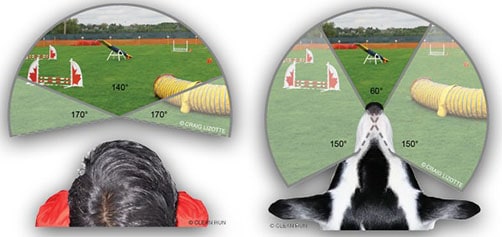
Many people buy toys without any knowledge that dogs have such severe eye sight problems. The dog toy manufacturers seem to create toys to appeal to humans. When buying a toy, consider where you are using the toy. Will your dog be playing with it on the grass, or chasing after it in the water? Blue is the better color for playing on the grass. As you can see from the picture above, blue feathers stands out better against the green palm branch. The red, yellow, and green colors are very similar appearing as muted shades of brown. In contrast to the grass, orange or yellow are better colors for toys thrown in the air.
The best thing to do is to have toys with multiple colors on them. A light and a dark contrast such as a pattern or patch or bull eyes on the toys will allow the dog to see it in either sky or grass. A plain black and white contrast would work.
Just like humans, dog’s eyes have problems, too. As your dog gets older, his eyesight changes. Dogs’ nearsighted vision declines starting at middle age, approximately 7 years old, so catching a small treat or walking down stairs might become more difficult then.
Cataracts are a common eye disease among dogs, causing clouding of the lens which can lead to blindness. There are a slew of other eye problems plaguing dogs, from simple allergic reactions to more extreme diseases, like Pannus, that can be devastating to your dog if it goes untreated.
It’s a wonder dogs can survive with such poor eye sight.
The images inside this post are used with permission from the Veterinary Vision Inc. (Source: http://veterinaryvision.com/resources/what-do-dogs-and-cats-see/)
How Many Words Can Dogs Learn?
We don’t speak dog. We definitely don’t understand animal behavior. Dogs use a universal code to communicate with one another: body language, eye contact, vocal intonations, and intuition. Introducing dogs into human society has been a huge learning experience for both parties involved, but dogs have adapted well over the centuries from being village strays to becoming companions to performing in shows. Learning words has been an important factor in dogs’ lives.
A dog can recognize an average of 160 words. Some words are easier to learn than others; for example, “walk” is associated with something dogs like to do, whereas the command “sit” is harder because it is based on a learned behavior. Puppies learn fairly quickly that there is a reward for good behavior and will start to associate a word with a behavior desired by the owner. We all use some type of positive/negative and reward/punishment system to teach dogs to associate sounds (or words) with behaviors; this is called “operant conditioning.” Puppies learn that they receive treats when they do something the owner asks them to do, and they learn that the cookie is taken away from them when they do something that the owner does not want. Jean Cotes explains this in his Walking in Harmony program.
How we say words makes it easier for dogs to pick up on what is being taught to them. Tone, duration, and sound elicit different types of behavior. The emotional inflection of sentences spoken to dogs plays a big part in how they learn words. Watch how people talk to their dogs. Their sentences usually have a melody or mood to them; the phrases “do you want,” “go get the ball,” and “you rolled in poo!” are examples. High tones will excite the dogs; low tones will not capture their attention as readily. Drawing out a word emphasizes attention to the word: “staaaaaaay” will cause the dog to slow or stop what it is doing. Clicking and ticking sounds and quick, explosive utterances capture the dog’s attention. These sounds are good to use when dogs are off leash and at a distance from the owner.
“Words” is a relative term; dogs learn sounds. Dogs are like sponges when it comes to learning. They have an unrelenting drive to please humans. Rewarding them for good behavior becomes a quick and easy way to teach them. I’ve known people who have taught their dogs words in German and English (bilingual dogs!) and others who have taught dogs the command “roll over” but have conditioned them to know that means to sit. The earlier you start talking to your dog, the better your dog will be able to comprehend your words.
As far as dogs learning words, some can even talk! Many people have watched the YouTube video of the dog that says “I love you.” Some dogs even sing. I’ve spent many nights listening to my dog joining in on a husky session of singing while in agility class. Of course, they don’t know what they’re saying, but they learn sounds. They are watching and learning from our every move. What other animals have been at our sides for centuries, gaining valuable trust and providing companionship? Needless to say, dogs are smart, awesome creatures.

